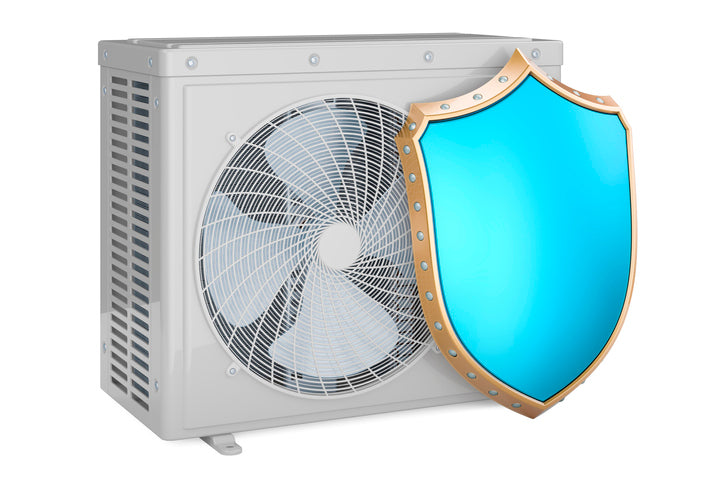Tips for Installing a Mini-Split Heat Pump

Mini-split heat pumps are known for their ability to save costs. In addition to having a lower initial cost than most ducted systems, they are also less expensive to install and can save you money over time due to the energy savings they provide. If that’s not enough cost savings for you, installing your mini-split system on your own can save you even more money.
While it may seem a little daunting to install your own system, mini-split systems have a fairly simple installation process—especially compared to other temperature control systems. Rather than installing invasive ductwork that often takes several weeks, most mini-split systems can be installed in two days or less and only require a three-inch incision in the wall. To ensure that the installation process goes smoothly, follow these tips for installing a mini-split heat pump.
Read the installation manual thoroughly
When it comes to installing a mini-split heat pump, there isn’t one all-encompassing guide that works for all systems. While most mini-split systems operate in a similar way and have similar installation processes, each mini-split system will have several differences. As such, it’s important to obtain an installation manual that was created specifically for the product you’re installing and read it thoroughly.
Familiarizing yourself with the product’s installation manual is just as important for ensuring that the product is installed correctly as it is for your personal safety. In addition to instructions, it will also contain important warnings noting the potential hazards that may arise during the installation process.
Make sure you have all the necessary parts
Another tip for installing a mini-split heat pump is to make sure you have all the necessary parts before you get to work. You don’t want to get half-way through the installation process only to realize that you’re missing an essential part. Before you start installing your mini-split, completely unpack the indoor and outdoor units. Then, check to make sure that you have each part listed on the owner’s manual. Once you’ve confirmed that all parts are accounted for, keep them in a safe location throughout the duration of the mini-split’s installation.
Gather the essential tools
Installing a mini-split requires several essential tools. Before starting the installation process, it’s important to purchase, borrow, or rent them to ensure that you have everything you need to get the job done. Typically, a DIY mini-split installation can be completed with just a few relatively basic tools:
- Drill, screwdriver, adjustable wrenches: used for drilling the system into the wall.
- Hole saw: used to cut the three-inch hole into your exterior wall for the refrigerant lines and electrical cable connecting the indoor and outdoor units together to run through.
- Stud finder: used to locate studs in your wall and determine proper placement of the mini-split system.
- Tube cutter: used to cut and fit refrigerant lines.
- Vacuum pump, pressure gauge: used for purging refrigerant lines.
Plan and measure before you drill
When installing a mini-split, don’t simply attempt to figure things out as you go along. This mentality will likely result in a bunch of three-inch holes in your wall that you have to later patch up. Instead, complete all necessary planning and measurements before you start drilling. When measuring for your mini-split, keep in mind that ground levels may differ inside and outside.
Stabilize the exterior unit with concrete
The weight of your mini-split’s exterior unit should be a key consideration during the installation process. The exterior unit for most mini-split heat pumps will weigh between 80 and 250 pounds. As such, you must find a location that is sturdy enough to support such weight. Avoid areas with soft ground that may shift the unit and disrupt connections, leading to future operational errors.
Ideally, you should pour a concrete slab on the ground to serve as the unit’s base. This concrete slab should be completely level to prevent the unit from slipping. Once the concrete slab is leveled and dried, secure the unit into the slab using anchor bolts. Doing so will ensure the unit’s weight is properly supported and that the system won’t shift over time.
Install new electrical wiring
Perhaps your home already has existing power wiring between its circuit breaker panel and the location of a previous outdoor unit. Even if such wiring meets the electrical requirements of the new mini-split outdoor unit, it’s best to install completely new electrical wiring for the indoor and outdoor unit. While doing so may seem unnecessary, such extra efforts could prevent the system from experiencing future issues.
Because mini-splits often include a single cable that combines both power wiring and communications wiring, any potential issues could impair the digital communication between the mini-split’s indoor and outdoor unit. As a result, the system may experience operational issues or shut down entirely.
Complete a pressure test to prevent leaks
When installing your mini-split, it’s important to take extra precautions to avoid potential refrigerant leaks in the future. Because mini-split systems require a critical refrigerant charge, leaks in a mini-split system can be a huge hassle. If a mini-split system experiences a refrigerant leak, additional refrigerant can’t simply be added back into the system to replace the lost supply. Instead, the entire refrigerant charge must be recovered and weighted back in after the leak has been properly repaired.
Most refrigerant leaks that occur in mini-split systems are the result of poor installation practices that result in inadequate flare connections. As such, one of the most effective ways that you can ward off refrigerant leaks during the installation proves is by completing a proper pressure test on the system’s refrigerant lines.
Because most mini-splits necessitate a pressure test in the 500- to 600-PSIG range, a regulator that can introduce at least 600 pounds of pressure is necessary to complete a proper pressure test. However, pressure requirements for each system will differ, so it’s important to check the installation manual for further information.
Now that you know how to install your mini-split successfully, all that’s left to do is purchase the system. When it comes to high-quality mini-split systems, look no further than the Pioneer Mini Split Store. Since 1995, we have been one of the country’s largest suppliers of ductless mini- and multi-split systems. Today, our inventory consists of numerous superior-quality systems such as ceiling cassette mini-splits, floor-mounted mini-splits, and mini-split wall mounts.
If you’re still a little nervous about the mini-split installation process, give us a call. Our experienced customer service and technical support departments are always ready to answer any questions you may have.







